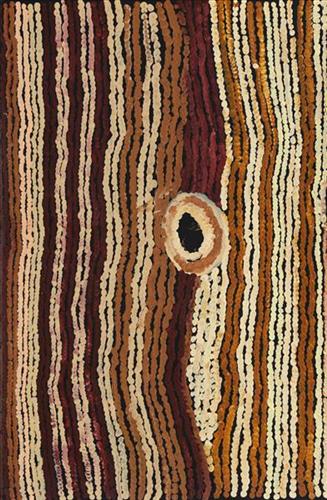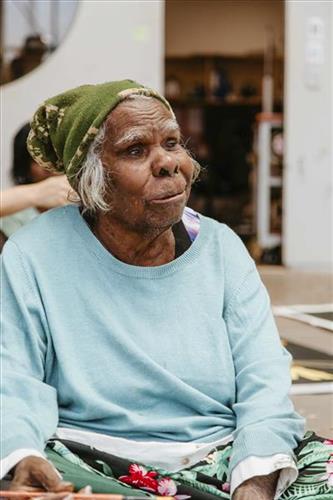111582239198
Jutupa
Jutupa is a waterhole located yulparirra (south) of Punmu Aboriginal Community, and at the southern edge of Nyayartakujarra (Lake Dora). The site falls within the Karlamilyi (Rudall River) region, an area created by the Jila Kujarra (Two Snakes) as they journeyed north east to Nyayartakujarra. Surrounding Jutupa are the distinctive long tali (sandhills) of Martu Country. Other nearby water sources include Pinjupinya, Wawul, Tarl, and Jarntinti.
This site lies within Mayiwalku’s ngurra (home Country, camp), the area which she travelled extensively around with her family as a young girl. Mayiwalku recollects staying here as a child with her two sisters, Nyanjilpayi (Ngarnjapayi) Nancy Chapman and Mulyatingki Marney, her brother, father and three mothers. Here they would collect kalaru (Samphire, salt bush) seed. In the pujiman (traditional, desert dwelling) era, the black kalaru seeds were used to produce damper, a type of flat bread. The seeds were first washed several times before being ground with a jiwa (stones used by women for grinding seeds) to make a flour, which was then mixed with water to create a dough that was finally cooked in the ashes of a fire.




